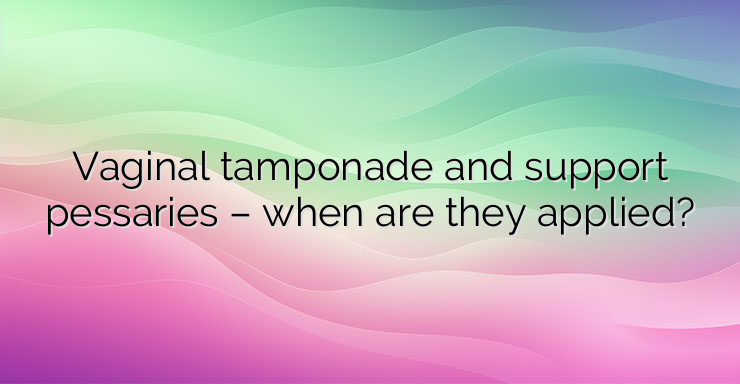Hey there! Let’s dive into understanding vaginal tamponade and supportive pessaries in a way that’s easy to grasp.
Vaginal Tamponade
So, what’s vaginal tamponade? It’s basically filling up the vagina with a gauze strip or something absorbent. Why? Well, it helps stop bleeding from the vagina and cervix, and it can temporarily fix uterovaginal prolapse if there’s a decubitus ulcer.
Picture this: the patient’s lying on her back on a gynecological chair. The doctor uses special tools like gynecological valves and a speculum to open up the vagina. Then, they slowly introduce the gauze strip, first filling up the vaults and then the vagina itself. At the end, part of the strip hangs outside the vulva.
But here’s the thing – it’s not a permanent fix. The tamponade needs to be removed within 24 hours to avoid infections. Plus, if it’s too tight, it can cause issues with peeing. So, sometimes, a urethral catheter is placed to help the woman out.
How does it work? Well, the tight fit of the gauze strip compresses the blood vessels, stopping the bleeding. Plus, the gauze contacting the vessels helps kickstart the blood clotting process. There are even special tampons with meds for vaginal and cervical infections, but they shouldn’t be left in for too long because of infection risks.
Supportive Pessaries
Now, let’s talk about supportive pessaries. These are like mechanical devices – loops and rings – used to fix prolapse of the uterus and vagina. They’re not as popular as they used to be, but they’re still handy for women who can’t have surgery.
There are different types, but the round and Hodge pessaries are the most common. The round ones are placed to support the vaginal walls, while the Hodge pessary is more about correcting the position of the uterus.
Placement is key. They’re lubed up and inserted vertically to avoid discomfort. Then, they’re rotated horizontally to make sure they’re in the right spot. It’s important to check regularly to prevent infections and other issues.
Now, wearing these for too long can cause some problems like constipation, infections, and even pressure sores. So, good hygiene and regular check-ups are a must to avoid any complications.
In a nutshell, both vaginal tamponade and supportive pessaries have their roles in women’s health, but they’re not long-term solutions. It’s all about finding what works best for each individual while keeping an eye on their overall well-being.


Leave a Reply